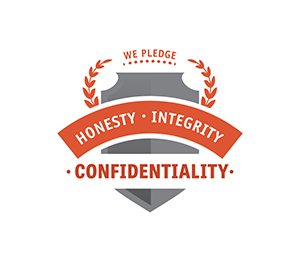One of the biggest environmental crisis to hit North American homeowners and builders in decades is the issue of toxic Chinese drywall.
Chinese drywall has been detected off-gassing of volatile chemicals and sulfurous gasses including carbon disulfide, carbonyl sulfide, and hydrogen sulfide. Humidity in the air causes the sulfur in the drywall to off-gas, or transfer into the structure and effect air quality. Creating a noxious odor, and can result in serious health conditions and illnesses, such as breathing problems, eye irritation, fatigue, dizziness, insomnia, sore throat, bloody nose, and headaches.
When the sulfide gas comes into contact with normal levels of home humidity, it gives off a rotten egg smell and begins to cause extensive damage to any exposed copper or lead in the home. Affected homeowners have reported blackened and scorched wiring behind wall plugs and switch plates, and corroded evaporator coils on air conditioning units. Light bulbs and fixtures may also stop working.
Household appliances and other electrical equipment may fail prematurely, and personal jewelry, silverware, and wiring in cable televisions and converters can turn black.
Hundreds of millions of sheets of the Chinese drywall were imported into the United States and Canada between 2001 and 2007. It has been reported in as many as 14 states and many provinces and may have been used in an estimated 100,000 renovated and newly-built homes, with up to 40,000 in Florida alone.
Another estimated 929,000 square meters arrived in Canada through Vancouver in the same period. Most of the Chinese drywall imported into Canada was used in the lower B.C. mainland, Vancouver, Burnaby, Abbotsford, and many drywall sheets have reached Alberta, Saskatchewan, and Manitoba and as far east as Toronto, Ontario.
Homes damaged by Hurricanes Katrina and Wilma in Louisiana, Mississippi, Florida, and Texas used large amounts of Chinese drywall in the new construction and renovations. Understandably many will have to be rebuilt a second time to replace all the toxic Chinese drywall.
One prevalent theory about the toxicity in the Chinese drywall is that it was manufactured in gypsum mines in China using fly ash, a by-product of coal-powered electrical generation. Coal fly ash can become airborne and emit toxic sulfur compounds. (Coincidentally, defective fly ash was the critical ingredient in ready-mix concrete used in the crumbling foundations of hundreds of homes in Eastern Ontario. This resulted in 16 years of litigation, almost $20 million in damages and another $20 million in court costs.)
A German drywall company Knauf Gips KG, a Chinese subsidiary and a number of American home builders are facing class actions lawsuits, including one by a group of Florida homeowners. Do not be surprised if several more class action suits are started across North America.
The only possible fix for affected homes with Chines drywall is to have the owners move out for several months, gut the house and rebuild the interior. Anything inside the house that may have been contaminated by the sulfur gasses will also have to be destroyed and replaced. This is going to have a huge impact on all the families affected going forward.
Industry watchers have estimated that as few as three sheets of drywall in a house can be enough to contaminate it to the point of making it uninhabitable.
House insurance policies do not normally cover environmental issues, and there have been reports of some home insurers refusing to pay for replacement of the Chinese drywall. In cases like these, homeowners could be facing huge renovation cost or worse, losing their home.
Thomas Martin, president of America’s Watchdog, says the crisis is “the worst case of sick houses in U.S. history.”n CanadaThe full effect of the Chinese drywall crisis remains to be seen.
In Canada, the full effect of the Chinese drywall crisis remains to be seen.
If you suspect you have Chinese drywall in your home, consult an environmental engineer or qualified home inspector.
My Promise to You
 Choosing the right inspection service provider can be difficult. Unlike most professionals you hire, you probably won’t meet me until your inspection appointment–after you’ve hired. Furthermore, different inspectors have varying qualifications, equipment, experience, reporting methods, and pricing. One thing that’s certain is that a thorough inspection requires a lot of work. Ultimately, a quality inspection depends heavily on the individual inspector’s effort. I guarantee that I will give you my very best.
Choosing the right inspection service provider can be difficult. Unlike most professionals you hire, you probably won’t meet me until your inspection appointment–after you’ve hired. Furthermore, different inspectors have varying qualifications, equipment, experience, reporting methods, and pricing. One thing that’s certain is that a thorough inspection requires a lot of work. Ultimately, a quality inspection depends heavily on the individual inspector’s effort. I guarantee that I will give you my very best.
— Steven Letendre
Admirable Inspection Services